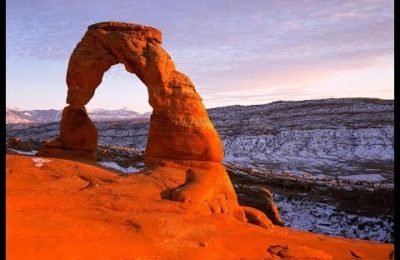All the time you get information about different and well known tourist attractions in the U.S. but there are several places that are not well know to Americans and that is what we want to explore. Be you an American resident or just visiting, these places are some of the most Epic Places You must visit in the United States that Even Americans Don’t Know About
1. Pecos National Historical Park
2. Grand Teton National Park

Grand Teton National Park is an American national park in northwestern Wyoming. At approximately 310,000 acres (480 sq mi; 130,000 ha; 1,300 km2), the park includes the major peaks of the 40-mile-long (64 km) Teton Range as well as most of the northern sections of the valley known as Jackson Hole. Grand Teton National Park is only 10 miles (16 km) south of Yellowstone National Park, to which it is connected by the National Park Service-managed John D. Rockefeller, Jr. Memorial Parkway. Along with surrounding national forests, these three protected areas constitute the almost 18,000,000-acre (7,300,000 ha) Greater Yellowstone Ecosystem, one of the world’s largest intact mid-latitude temperate ecosystems.
3. Fly Geyser
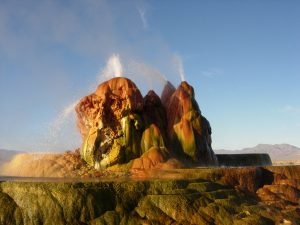
Fly Geyser, near Gerlach, Nevada
Fly Geyser, also known as Fly Ranch Geyser is a man-made small geothermal geyser located in Washoe County, Nevada approximately 20 miles (32 km) north of Gerlach. Fly Geyser is located near the edge of Fly Reservoir and is only about 5 feet (1.5 m) high, but 12 feet (3.7 m) counting the mound on which it sits in 2013.
Fly Geyser is located on the private Fly Ranch in Hualapai Flat, about 0.3 miles (0.48 km) from State Route 34. The ranch is currently owned by Todd Jaksick. There is a high fence and a locked gate topped with spikes to exclude trespassers. The only access is a dirt road, but it is large enough to be seen from the road.
4. Fort Jefferson
Fort Jefferson is a massive but unfinished coastal fortress. It is the largest brick masonry structure in the Americas,and is composed of over 16 million bricks. The building covers 16 acres (6.5 ha). Among United States forts, only Fort Monroe in Virginia and Fort Adams in Rhode Island are larger. The fort is located on Garden Key in the lower Florida Keys within the Dry Tortugas National Park, 68 miles (109 km) west of the island of Key West. The Dry Tortugas are part of Monroe County.
Pecos National Historical Park is a United States National Historical Park in San Miguel and Santa Fe Counties, New Mexico. The park, operated by the National Park Service, encompasses thousands of acres of landscape infused with historical elements from prehistoric archaeological ruins to 19th-century ranches, to a battlefield of the American Civil War. Its largest single feature is Pecos Pueblo, a Native American community abandoned in historic times. First a state monument in 1935, it was made Pecos National Monument in 1965, and greatly enlarged and renamed in 1990. Two sites within the park, the pueblo and the Glorieta Pass Battlefield, are National Historic Landmarks.
5. Chiricahua National Monument

Chiricahua National Monument
Chiricahua National Monument is a unit of the National Park System located in the Chiricahua Mountains of southeastern Arizona. The monument was established on April 18, 1924, to protect its extensive hoodoos and balancing rocks. The Faraway Ranch, which was owned at one time by Swedish immigrants Neil and Emma Erickson, is also preserved within the monument
6. Grand Prismatic Spring
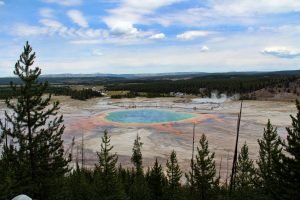
The Grand Prismatic Spring in Yellowstone National Park is the largest hot spring in the United States, and the third largest in the world, after Frying Pan Lake in New Zealand and Boiling Lake in Dominica. It is located in the Midway Geyser Basin.
Grand Prismatic Spring was noted by geologists working in the Hayden Geological Survey of 1871, and named by them for its striking coloration. Its colors match the rainbow dispersion of white light by an optical prism: red, orange, yellow, green, and blue
7. Cache River State Natural Area.
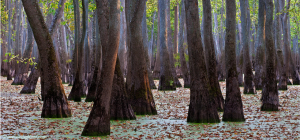
Cache River State Natural Area is situated in southernmost Illinois within a floodplain carved long ago by glacial floodwater of the Ohio River. When the Ohio River adopted its present course, it left the Cache River to meander across rich and vast wetlands. Among the outstanding natural features are massive cypress trees whose flared bases, called buttresses, exceed 40 feet circumference. Many are more than 1,000 years old, including one that has earned the title of state champion bald cypress because of its huge trunk girth, towering height and heavily branched canopy.
The Cache River State Natural Area holds onto some of the highest quality aquatic and terrestrial natural communities remaining in Illinois. Wetlands within this area are so important to migratory waterfowl and shorebirds that in 1996 the Ramsar Convention collectively designated them a Wetland of International Importance, only the 19th wetland in the United States to receive the distinction.
8.Plaza Blanca

Made famous by local artists Georgia O’Keeffe, these landscapes in a valley of the Rio Chama hills near the village of Abiquiu, when she made a series of paintings about the places she called “The White Place”, or in Spanish “Plaza Blanca”, this area of New Mexico is now on the grounds of the Dar Al Islam education center and mosque
9. Skagit Valley Tulip Fields
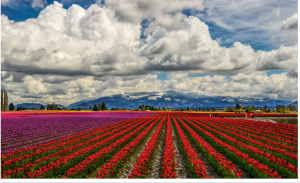
As the blue sky finally pushes through the wet, grey clouds, people make their way in droves to the outdoors. And the first stop Washingtonians usually make it the celebrated Skagit Valley Tulip Festival.
As its name suggests, the festival sits in the Skagit Valley fields of Mount Vernon, a small town an hour north of Seattle. Spanning the entire month of April, the celebration witnesses hundreds of thousands of people who flock to the area to catch a glimpse of the festival that boasts more than one million blooming tulips, irises, and daffodils.
It’s not just Washington residents either. According to the festival, the fields saw visitors from all 50 states and 93 foreign countries in 2016. By the looks of it, visitors wouldn’t know that it took some years before the fest finally found its rhythm, more than a century to be exact.
10. Horseshoe Bend Arizona
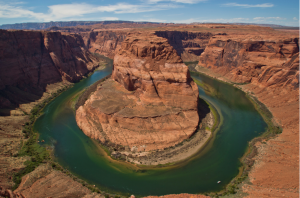
Horseshoe Bend is a horseshoe-shaped incised meander of the Colorado River located near the town of Page, Arizona, United States.
Horseshoe Bend is located 5 miles (8.0 km) downstream from the Glen Canyon Dam and Lake Powell within Glen Canyon National Recreation Area, about 4 miles (6.4 km) southwest of Page.
It is accessible via hiking a 1.5-mile (2.4 km) round trip from a parking area just off U.S. Route 89 within southwestern Page.Horseshoe Bend can be viewed from the steep cliff above.
The overlook is 4,200 feet (1,300 m) above sea level, and the Colorado River is at 3,200 feet (980 m) above sea level, making it a 1,000-foot (300 m) drop.
The rock walls of Horseshoe Bend contain hematite, platinum, garnet, and other minerals.
By 2018 references to the location on social media had caused the number of visitors to increase significantly.



